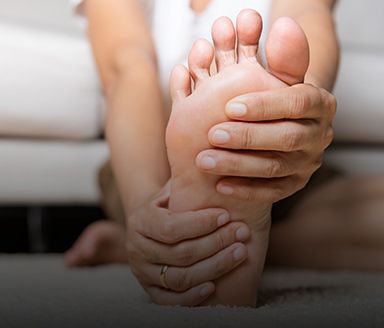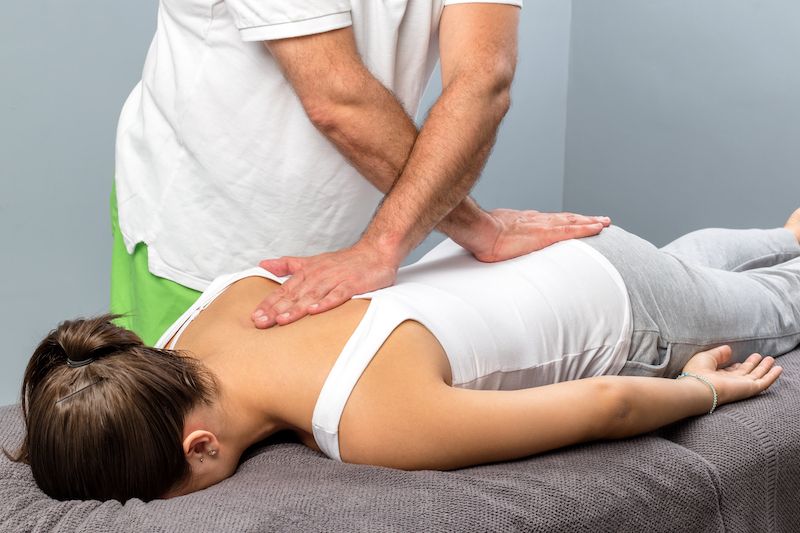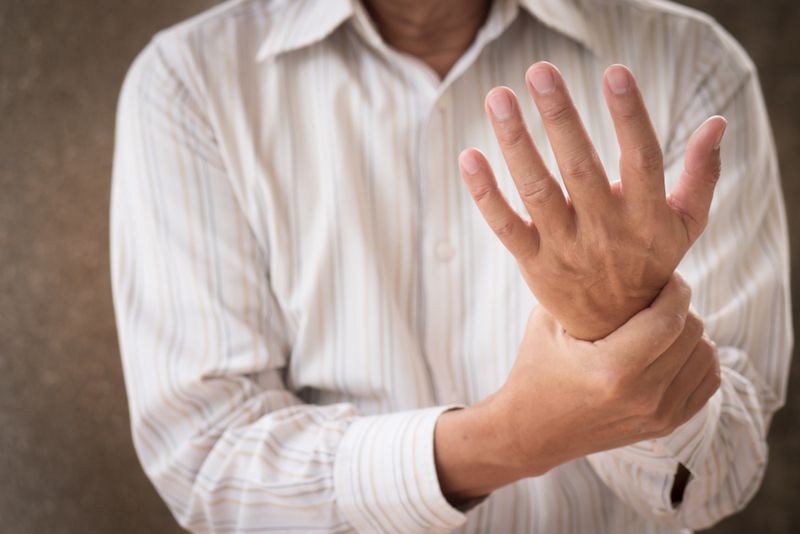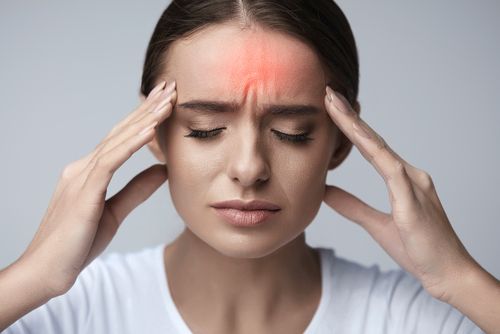
Low Back Pain
Lower back pain is an exceptionally common complaint and it is estimated that 80% of Americans will suffer from it at some point during their lifetime. Lower back pain is also a leading cause of absence from work due to ill health, even though more than half of all cases are believed to be a direct result of the patient doing a job that involves continual sitting.
In many cases, the back pain is either not severe enough for the patient to seek professional intervention or it resolves itself within a few days. However, there is a percentage of individuals who suffer from chronic, recurrent back pain and are reliant on pain medication to help keep them comfortable day today.
Fortunately, there is no longer any need to suffer from ongoing lower back pain. Chiropractic care from a trained and experienced professional can help relieve your discomfort and enable you to work, sleep and enjoy life without worrying about back pain.
What causes lower back pain?
The lower back, also known as the lumbar, works with the bones of the pelvis to help support the weight of our body as well as to stabilize, rotate, flex and bend the spinal column.
Lower back pain has been attributed to many different things, but experts tend to agree that a sedentary lifestyle, combined with the growing obesity problem, has definitely contributed to the increasing number of people experiencing lower back pain. Posture is also a significant cause of lower back pain. Sitting at laptops and computers for hours on end as well as sitting too long while driving and when watching television are all associated with this type of discomfort.
Occasionally, back pain can be attributed to a medical condition such as sciatica, irritation of the nerve that runs from the pelvis to the feet, or a slipped/herniated disc. Nevertheless, it is often impossible to pinpoint an exact cause of lower back pain and is therefore often referred to as ‘non-specific back pain’ by doctors.

Neuropathy
Neuropathy is a disorder that occurs when our nerves, specifically those outside of our brain and spinal cord, start to malfunction. It's also referred to as peripheral neuropathy, as it commonly affects the peripheral nerves. These nerves are crucial for our wellbeing as they control our motor responses and sensory perceptions.
The complexity of neuropathy lies in its diversity. There are over 100 types of neuropathy, each with a unique set of symptoms and course of treatment. Some neuropathies affect just a single nerve, known as mononeuropathy, while others affect several nerves at various locations, known as polyneuropathy. Neuropathy can either be inherited or acquired. Inherited neuropathies are a result of genetic disorders, while acquired neuropathies can stem from various factors like injuries, infections, or exposure to certain toxins.

Herniated Bulging Discs
As a non-invasive and drug-free alternative, chiropractic care has been found to be highly effective in treating herniated or bulging discs. Chiropractors use hands-on spinal manipulation and other alternative treatments to ensure proper alignment of the body's musculoskeletal structure, particularly the spine. This enables the body to heal itself without surgery or medication.
Chiropractic adjustments help restore mobility to joints restricted by tissue injury caused by a traumatic event, such as falling, or repetitive stress, such as sitting without proper back support. Chiropractors may also incorporate nutritional counseling and exercise/rehabilitation into the treatment plan. The goals of chiropractic care include the restoration of function and prevention of injury, in addition to back pain relief

Neck Pain
Neck pain is a relatively common ailment, which most of us will experience at least once in our lifetime. In most cases, neck pain will improve and disappear on its own, but if you frequently suffer from this problem, or find that conventional ways of relieving your pain are not working, you may want to consider chiropractic care.
About neck pain
The neck is a very important part of our body, containing the very top of the spine, called the cervical spine as well as many blood vessels and nerves that supply structures including our esophagus, larynx, trachea and thyroid gland. The neck is also home to major blood vessels including the carotid arteries and jugular veins.
When there is tension in the neck, it can have a significant impact on the flow of blood between the head and body, as well as cause compression of the nerves and potentially the spinal cord. When this happens, it can have an effect on other areas of the body, including the upper and lower limbs.
What causes neck pain?
In many instances, the exact cause of neck pain may never be known, but some of the most common causes believed to be behind the majority of cases include:
Sleeping in an awkward position
Bad posture
Trapped nerve
An injury, such as from a vehicle collision or fall
The pain you experience may also differ. It may be a constant dull ache or a sharp pain that occurs when you place your head a certain way or perform a specific movement, such as turning your head from side to side.
In many cases, neck pain may be accompanied by other symptoms, including swelling or inflammation in the neck, pain that radiates into the shoulders or upper arms, or headaches.


Disc Degenerative Disease
Degenerative disc disease (DDD) is a condition that refers to the natural changes that occur in the spinal discs over time. Spinal discs are soft, gel-like cushions that separate the vertebrae in the spine and act as shock absorbers. As people age, these discs can undergo wear and tear, leading to degenerative changes.
Let Dr. Brad Richardson and our integrative medical team determine if your pain is a symptom of DDD or if your daily activities (driving, emptying the dishwasher, light cleaning) are contributing to your condition.
Key points about degenerative disc disease:
Normal Aging Process: DDD is often considered a normal part of the aging process. As people get older, the discs lose water content and become less flexible, making them more prone to damage.
Symptoms: While many people with DDD may not experience any symptoms, some may develop pain and discomfort. Common symptoms include back pain that may radiate to the buttocks and thighs. The pain may worsen with movements like bending, lifting, or twisting.
Diagnosis: Diagnosing DDD involves a thorough medical history, physical examination, and imaging studies such as X-rays or MRI scans. These tests help to identify changes in the spinal discs and rule out other potential causes of symptoms.
Treatment Options: Many times our patients have been told SURGERY is the only option to treat their DDD. However, we have PROVEN non-invasive treatments for DDD such as our laser or decompression therapy or a combination of both, chiropractic adjustments, and more.

Spinal Stenosis
Spinal stenosis is a medical condition characterized by the narrowing of the spaces within the spine, which puts pressure on the nerves traveling through the spine. This narrowing can occur in the spinal canal or the spaces between the vertebrae. As a result, it may lead to pain, numbness, or weakness in the legs or arms.
If you’ve been told surgery is your only option for a diagnosis of Spinal Stenosis, please get Dr. Brad Richardson’s analysis and recommendation — you may be a candidate for one of our non-invasive therapies to treat your condition.
There are two main types of spinal stenosis:
1. Lumbar Stenosis: This occurs in the lower back and is the most common form of spinal stenosis. It can cause pain or cramping in the legs, especially during activity.
2. Cervical Stenosis: This occurs in the neck and can cause pain or weakness in the arms and hands.
The most common causes of spinal stenosis include aging and wear and tear on the spine, but it can also be associated with conditions like osteoarthritis, herniated discs, or injuries.

Arthritis
Arthritis is categorized into several different types. However, the two most common forms are Osteoarthritis and Rheumatoid Arthritis. Osteoarthritis involves the wear-and-tear damage to your joint's cartilage, the hard, slick coating on the ends of bones. On the other hand, Rheumatoid Arthritis is an autoimmune disorder that first targets the lining of your joints.
Apart from these, there are other types of arthritis such as Psoriatic arthritis, Gout, Lupus, and many more. Each type of arthritis has a specific cause and different symptoms.

Joint Pain
Joint Pain: How Chiropractic Care Can Relieve Your Discomfort
Joints are important musculoskeletal structures that connect bones to one another. Some facilitate different types of movement while others remain fixed. Joint pain is a very common and often debilitating problem with around one-third of all adults experiencing it at some point during their lifetime. Fortunately, there are treatments that can help and one of the most effective is chiropractic care.
Here’s what you need to know about joint pain and how chiropractic care can help relieve discomfort.
Causes of joint pain
There are many different things that can cause joint pain. The most common is a condition called osteoarthritis. Osteoarthritis occurs when the protective cartilage that usually protects the ends of bones begins to deteriorate, causing them to rub against one another. This friction causes pain, swelling, and problems moving the joint.
Other potential causes of joint pain include but are not limited to:
Gout
Bursitis
Inflammation of the joint lining
Damage to the cartilage at the back of the kneecap
Bleeding into the joint space
A fracture to the bones of the joint
Other types of arthritis such as rheumatoid and psoriatic arthritis
Your chiropractor will be able to assess your condition to determine the cause of your joint pain and recommend chiropractic techniques to help ease your discomfort.
Symptoms and signs associated with joint pain
Joint pain is just one of the symptoms that you might experience due to the underlying cause of your discomfort. Some of the others can include:
Joint stiffness
Joint warmth
Limping
Loss of range of motion in the joint
Weakness
Chiropractic care and joint pain
Chiropractic treatment is a popular alternative to conventional medicine when it comes to treating the many causes of joint pain. It can also be used alongside medications and other conventional treatments.
Chiropractic care focuses on eliminating misalignments in the spine and joints so that there is less pressure on the spinal cord and central nervous system. This allows all bodily systems to function optimally and boost circulation, enabling blood and nutrients to be delivered to the areas of the body that require healing. A reduction in inflammation helps to counteract spinal and joint motion problems, easing movement and reducing the pain that you might be experiencing, without the need for pain medications.
Chiropractors can also help address other factors that could be contributing to your joint pain, such as poor posture or sleep position, or not warming up or cooling down properly when exercising.
Chiropractic treatment plans are personalized and tailored to the needs of each individual. This means that the precise techniques used, frequency of appointments, and overall the care you are given will vary depending on the extent of your joint problem.

Headaches/Migraines
A headache is a very generalized term given to pain that is felt in the head or sometimes the neck. There are many different types of pain associated with headaches ranging from acute localized discomfort to a more generalized ache. Some headaches may appear suddenly and only last for a short period of time while others may build gradually and last for several hours.
Types of headaches
While experts have identified more than 150 different types of headaches, some are more common than others. These include:
Tension headaches
By far the most common type of headache is a tension headache, which is usually attributed to stress. They tend to come and go and cause mild to moderate pain with no other symptoms.
Migraines
Migraines are often considered to be more painful than a tension headache. They last longer ranging anywhere from a few hours to a few days and are usually accompanied by other symptoms such as sensitivity to light, smells, or sound, nausea and vomiting, blurred vision, and loss of appetite. Some people suffer from recurrent migraines and may experience multiple episodes in a short period of time.
Cluster headaches
Cluster headaches tend to occur in groups and even though no one is sure why are more common in men than women. The pain associated with a cluster headache tends to be a burning or piercing sensation that is localized behind or around one eye. It can also be so severe that the patient can’t function properly until the pain eases.
Sinus headaches
Sinus headaches tend to occur when one has a cold or sinus infection. With a sinus headache, the pain is felt in your cheekbones, forehead, or bridge of your nose where the sinuses are located since it is caused by the swelling of your sinuses. The pain usually decreases after taking anti-inflammatory pain medication.
There is a range of things that you can do to help with one-off headaches, such as taking pain medications, drinking plenty of water, and trying to relax somewhere calm and quiet. However, if you suffer from recurrent headaches, you may want to consider seeking chiropractic care, which has been shown to be very successful in providing relief and even helping prevent this type of pain.








